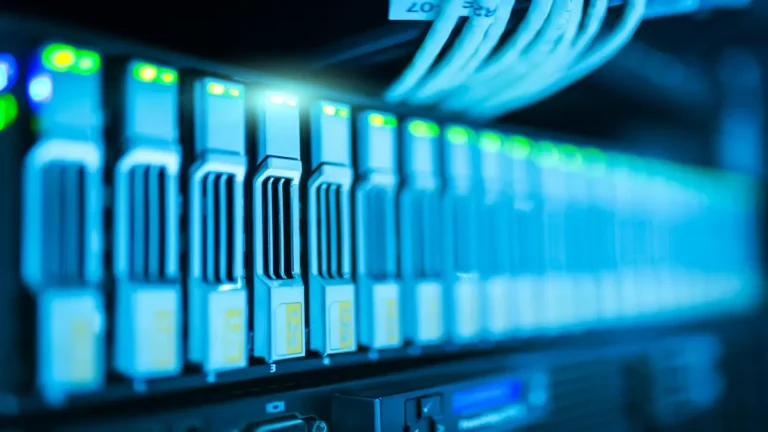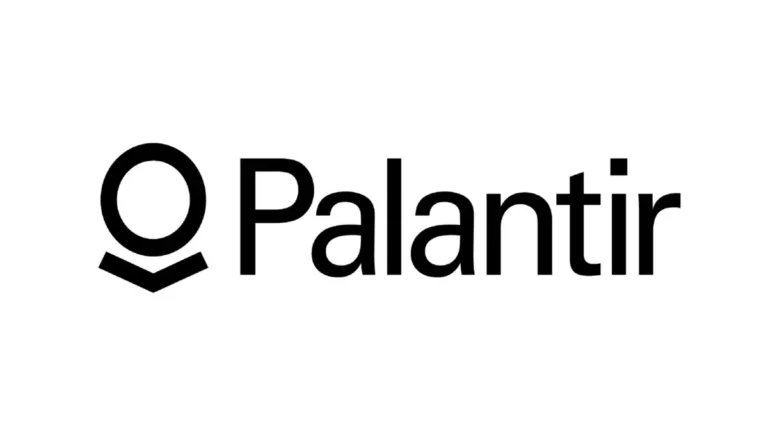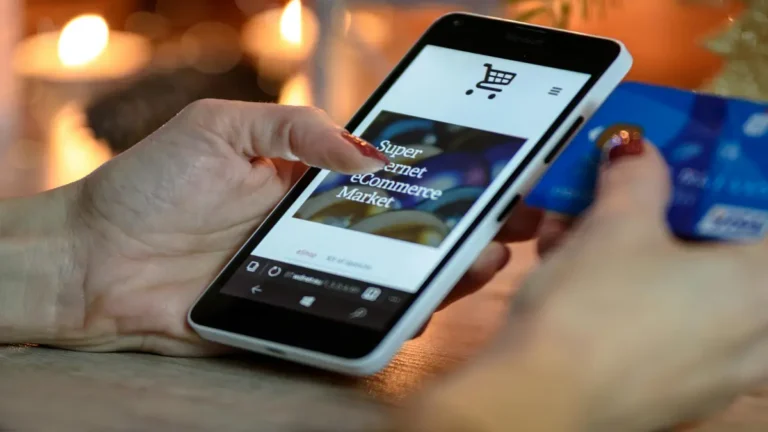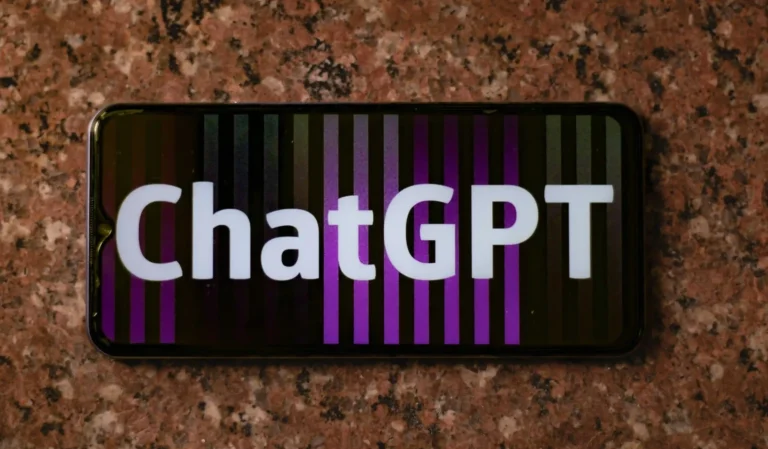Understanding Digital Addiction: Causes a Effects
The Alarming Rise of Digital Addiction in a Hyperconnected World Digital addiction is no longer a fringe concern—it’s a growing global issue…
The Alarming Rise of Digital Addiction in a Hyperconnected World
Digital addiction is no longer a fringe concern—it’s a growing global issue impacting people of all ages. In a world where smartphones, social media, and video games are deeply woven into daily life, more and more individuals are struggling to disconnect. Whether it’s endless scrolling through feeds, binge-playing addicting games, or losing track of time watching short-form videos, the digital world is designed to keep users hooked.
This constant stimulation is taking a toll on our mental health, productivity, and relationships. As we become more aware of this imbalance, terms like social media addiction and screen dependency are entering mainstream conversations. Experts and psychologists are emphasizing the importance of mental health awareness, especially as younger generations face increased anxiety, depression, and sleep disorders linked to excessive screen time.
During Mental Health Awareness Month, it’s crucial to highlight how digital overuse is more than a bad habit—it can develop into a behavioral addiction that reshapes the brain’s reward system. Games and apps are engineered with psychological triggers that encourage compulsive use, making it difficult for users to self-regulate. This is particularly concerning when it comes to addictive games designed with constant rewards and stimuli.
In this article, we’ll explore the roots and risks of digital addiction, how to recognize its signs, the connection to mental health awareness, and practical strategies on how to stop social media addiction before it takes control of your life. Understanding the impact is the first step toward reclaiming your time, focus, and well-being.
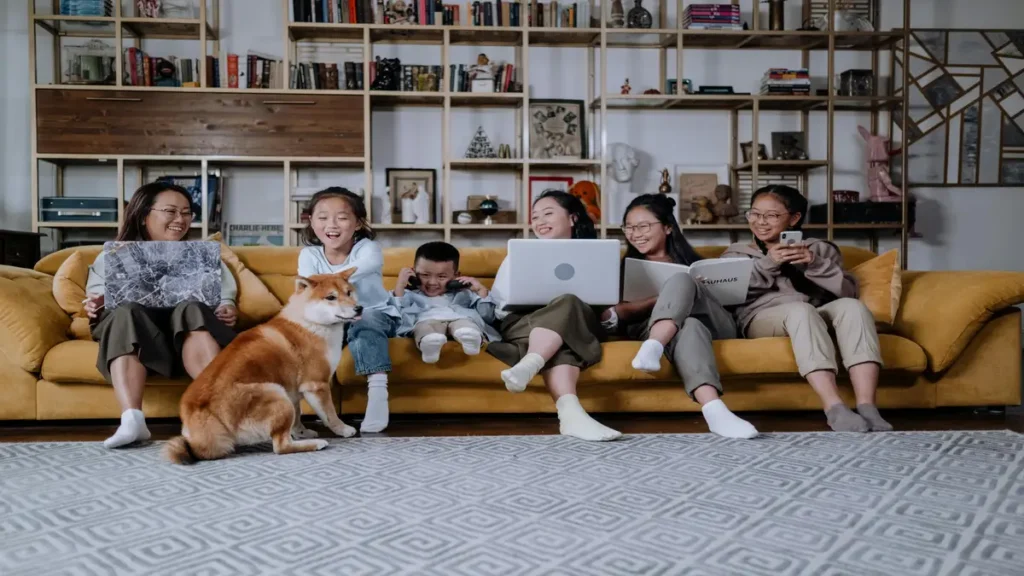
What Is Digital Addiction and Why Is It So Dangerous?
Digital addiction refers to the compulsive and excessive use of digital devices such as smartphones, tablets, computers, gaming consoles, and the internet. While technology is essential in modern life, the problem begins when its use becomes uncontrollable and interferes with everyday responsibilities, relationships, and mental well-being. Unlike substance addictions, digital addiction is behavioral—it doesn’t involve a chemical dependency, yet it can be just as harmful.
The danger of digital addiction lies in its subtlety. Unlike drug or alcohol addiction, it’s socially accepted—even encouraged—to spend hours on our devices. Whether it’s browsing endlessly on TikTok, checking emails late into the night, or getting sucked into addicting games, it’s easy to lose track of time.
This can create a cycle where the brain constantly seeks the next “hit” of pleasure. Over time, this erodes our ability to focus, reduces attention span, and increases anxiety. One of the most concerning aspects of digital addiction is how it reshapes brain function, especially in young people. Adolescents are particularly vulnerable because their brains are still developing, and exposure to addictive games or social media addiction patterns can have long-term effects.
The impact on mental health is profound. Studies have linked excessive screen use with increased rates of anxiety, depression, and low self-esteem. During Mental Health Awareness Month, it’s essential to remember that while technology connects us, it can also isolate us.
Additionally, how to stop social media addiction becomes a crucial question for those trying to break free from the digital trap. It’s not easy when platforms are engineered to keep users engaged through infinite scrolls, auto-play videos, and constant notifications. Recognizing the problem is the first step toward recovery.
In our digitally dominated society, even work and school are online, blurring the line between necessary usage and harmful overexposure. It’s important to strike a balance and set boundaries to prevent crossing into addictive territory. Tools like screen time trackers, app blockers, and mindfulness practices can help users become more aware of their habits.
To truly address digital addiction, we must start by acknowledging its seriousness and treating it like any other health issue. As this article unfolds, we will explore strategies to regain control over technology and create healthier habits that promote well-being and productivity.
The Psychology Behind Digital Addiction
To understand digital addiction, it’s important to explore the psychological mechanisms that drive it. Unlike traditional addictions, which often rely on external substances, digital addiction thrives on internal psychological loops—dopamine-driven feedback systems that reward us for staying engaged. Whether you’re mindlessly scrolling through social media or locked into a series of addicting games, what’s happening in the brain is very similar.
At the center of this is the dopamine reward system. Every time you receive a “like,” a new follower, or win a level in a game, your brain releases dopamine—a neurotransmitter associated with pleasure and motivation. The brain quickly learns to associate digital engagement with reward, reinforcing the behavior and encouraging you to come back for more.
This psychological feedback loop is especially powerful when combined with unpredictable rewards. Known as variable rewards, this is the same concept that keeps people gambling at slot machines: they never know when the next win will come, so they keep playing.
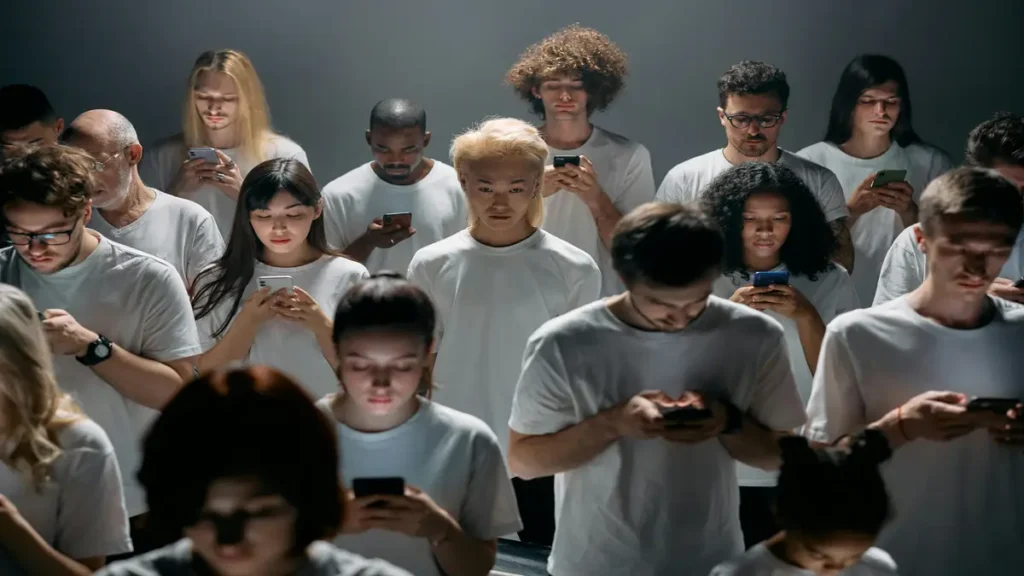
Another major factor is instant gratification. Technology provides immediate rewards with minimal effort. This trains the brain to expect fast results, reducing patience and increasing the likelihood of impulsive behavior. For example, someone may check their phone dozens of times an hour even when there are no notifications—because the possibility of something exciting triggers the same brain pathways.
These patterns affect people of all ages, but younger generations are at a higher risk. Children and teens raised in digital environments often struggle with attention, emotional regulation, and impulse control due to constant stimulation from screens. Over time, these habits can lead to mental health awareness issues such as anxiety, depression, and even symptoms resembling attention deficit disorders.
The design of digital platforms also contributes significantly. From auto-play videos on streaming platforms to infinite scrolling on social media, everything is engineered to minimize stopping cues. These cues are natural moments that prompt users to consider whether they should continue an activity—like reaching the end of a chapter in a book. In the digital world, those cues are nearly eliminated.
Compounding this issue is social media addiction, where users become dependent on digital validation. They begin to tie their self-worth to online engagement—how many likes they receive, how many followers they have, or how often their content is shared.
To create awareness during mental health awareness month, psychologists and educators are encouraging more open discussions around the long-term psychological impacts of digital overuse. Understanding the psychology of digital addiction is essential for building effective strategies to prevent and recover from it.
Addictive Games – How Gaming Hooks You In
In the realm of digital addiction, few industries have mastered the art of keeping users glued to their screens like the gaming industry. From casual mobile games to expansive online multiplayer platforms, addictive games are deliberately engineered to maximize user engagement—and in many cases, dependence.
These games are not just entertaining; they’re designed with a deep understanding of behavioral psychology. Game developers often implement features like reward systems, level progression, and daily login bonuses to trigger the brain’s pleasure centers. Each of these elements contributes to a habit-forming cycle that mirrors traditional forms of addiction.
For instance, many games use intermittent reinforcement—rewards given at unpredictable intervals. This mechanism is one of the most powerful tools in behavioral conditioning. The uncertainty of when or how a reward will arrive keeps players coming back for “just one more level,” even when they’re tired, bored, or have other responsibilities.
Another tactic is the “grind” loop, where players must invest significant time or microtransactions to progress. This sunk-cost mindset makes it psychologically harder to walk away, as players feel compelled to keep playing to justify the time or money they’ve already spent.
Add to this the social dynamics of gaming. Online multiplayer games encourage players to form teams, clans, or guilds—creating peer pressure to stay active so you don’t let your teammates down. There’s also the fear of missing out (FOMO) on limited-time events or exclusive in-game items, which further ties players into the ecosystem.
The consequences of overexposure to these addicting games can be severe. Sleep deprivation, academic decline, strained relationships, and physical health issues such as eye strain and sedentary lifestyle-related problems are common among excessive gamers. The World Health Organization has even recognized gaming disorder as a mental health condition.
Younger users are particularly vulnerable. With fewer self-regulation skills and less awareness of long-term consequences, children and teens can quickly fall into patterns of overuse. Parental controls and screen time limits can help, but often, these measures are not enough on their own.
It’s important to note that not all gaming is inherently bad. Games can foster creativity, problem-solving, and even social connection. The problem arises when gaming transitions from a recreational activity into a compulsive behavior—when players are no longer in control of their time or actions.
Parents, educators, and mental health professionals are increasingly advocating for balance and awareness. Initiatives launched during mental health awareness month have begun to address the psychological impact of digital addiction, especially in the gaming community. The emphasis is on recognizing early warning signs and setting clear boundaries to prevent escalation.
The Rise of Social Media Addiction
In the digital age, social media has transformed the way we communicate, connect, and consume information. While platforms like Instagram, TikTok, Facebook, and X (formerly Twitter) offer many benefits, they have also become central to a growing mental health crisis: social media addiction.
Social media platforms are carefully engineered to maximize screen time. Infinite scrolling, personalized algorithms, and notification systems are all built to exploit the brain’s reward circuitry. Every like, share, or comment triggers a release of dopamine—a neurotransmitter associated with pleasure and satisfaction. Over time, this can condition users to seek validation through engagement metrics, reinforcing compulsive behaviors.

Unlike many other forms of digital addiction, social media thrives on real-life relevance. Users feel the need to constantly check their feeds to stay updated, avoid missing out, and remain socially relevant. This constant connectivity fuels anxiety, disrupts sleep, and can erode self-esteem—especially among teens and young adults.
The illusion of connection through social media often replaces real-world interaction. While users may feel they’re staying in touch, the quality of those interactions is frequently superficial. As a result, excessive usage can lead to feelings of loneliness, inadequacy, and even depression. In a study published by the Journal of Social and Clinical Psychology, limiting social media usage was shown to significantly reduce symptoms of anxiety and loneliness in young adults.
Moreover, curated content on these platforms contributes to unrealistic standards for beauty, success, and lifestyle. This “highlight reel” effect can be especially damaging during mental health awareness month, when users may feel worse seeing others portray seemingly perfect lives. It’s important to remember that what’s posted online often doesn’t reflect reality.
Another factor that fuels social media addiction is the sense of identity tied to one’s online presence. Many users—particularly content creators or influencers—find their self-worth intertwined with how their content performs. This dependency can create performance anxiety and lead to obsessive behavior, such as checking engagement statistics or posting excessively to maintain relevance.
Parents and educators are also voicing concerns about how addicting games and social media are merging. Platforms like TikTok and YouTube use gamification techniques—such as follower milestones and badges—to keep creators and viewers engaged. This convergence makes the digital landscape even harder to navigate for young users.
However, breaking this cycle is possible. One of the first steps in understanding how to stop social media addiction is to increase awareness of usage patterns. Tools like screen time trackers, app limits, and notification management can help reduce compulsive scrolling. Equally important is replacing screen time with offline activities—whether that’s physical exercise, hobbies, or face-to-face social interaction.
Support also matters. Therapy and digital detox programs are becoming more popular, especially as mental health awareness grows globally. Schools, workplaces, and even governments are now launching campaigns to promote responsible social media use. You can also find helpful insights and resources from Addiction Center’s guide to social media addiction, which explores how behavioral patterns affect mental health and offers steps toward recovery.
In fact, the growing concern around this issue ties into broader discussions about the future of remote work, where digital communication plays a dominant role. You can read more about that in our article The Future of Remote Work.
How to Stop Social Media Addiction – Practical Strategies
Overcoming social media addiction requires intentionality, awareness, and a plan. As more individuals struggle with constant connectivity, the question arises: how to stop social media addiction without disconnecting entirely from modern life? Fortunately, there are effective, research-backed strategies that can help users regain balance without abandoning digital tools altogether.
1. Start with a Digital Audit
The first step is to understand your current digital behavior. Use screen time apps or built-in device analytics to track how much time you’re spending on each platform daily. You might be surprised by the results. By recognizing patterns—like mindless scrolling during meals or late-night browsing—you can pinpoint problem areas and set actionable goals.
2. Set Time Limits and App Restrictions
Most smartphones now come with digital wellbeing features. These allow you to limit app usage, mute notifications, or even lock access after a certain threshold. Tools like Freedom, Offtime, and Stay Focused are also effective for those looking for more control. Creating digital boundaries helps reduce compulsivity and encourages more mindful use of technology.
3. Replace, Don’t Just Remove
One major mistake people make is attempting to “detox” by going cold turkey. While this may work temporarily, long-term success often comes from replacing screen time with fulfilling offline activities. Consider picking up a hobby, joining a local group, or simply spending more time outdoors. These alternatives can provide the dopamine hit your brain seeks without the side effects of digital addiction.
4. Curate Your Feed
Your digital environment affects your mental state. If your feed is full of unrealistic beauty standards, negativity, or content that triggers anxiety, start unfollowing. Instead, follow creators who promote mental health awareness, personal growth, and positivity. This not only changes what you consume but also helps you create a healthier digital routine.
5. Schedule “No-Scroll” Zones
Designate specific times and areas where devices are off-limits—like the bedroom, during meals, or the first hour after waking up. These boundaries help create mental separation between you and your devices, reducing the impulse to check notifications constantly.
6. Be Accountable
Tell a friend or family member about your goal to reduce social media use. Better yet, do it together. Group accountability fosters encouragement, shared learning, and support—making it easier to stick with the process, especially during mental health awareness month when many people seek to improve their emotional wellbeing.
7. Understand the Deeper Root
For some, social media addiction is a symptom of something deeper: boredom, loneliness, or low self-esteem. Reflecting on the “why” behind your habits is essential. Journaling or speaking with a therapist can provide insights and healing strategies that go beyond simple habit-breaking.
8. Use Technology to Fight Technology
Ironically, technology itself offers tools to combat digital addiction. Apps like Headspace, Calm, and Insight Timer can help promote mindfulness and reduce anxiety. Many people also use focus playlists or ambient noise apps to stay grounded during work hours and reduce the urge to check social platforms.
9. Celebrate Progress, Not Perfection
It’s important to understand that lapses happen. What matters is your overall direction. Celebrate small wins, like reducing your daily screen time by 15 minutes or skipping social media for a full afternoon. These gradual changes compound into long-term transformation.
For those interested in how gaming platforms are evolving and possibly contributing to digital overuse, check out our article on PS5 vs PS5 Pro, where we explore the entertainment technology shaping modern habits.
The Hidden Impact of Addictive Games on Mental Health
While social media gets much of the spotlight in discussions on digital addiction, another culprit is increasingly recognized: addictive games. These highly engaging, dopamine-driven platforms have reshaped entertainment, especially for younger generations. But behind the fun lies a growing concern: how are addicting games affecting our minds, focus, and emotional well-being?
The Psychology Behind Game Addiction
Game developers design experiences that keep users coming back. Whether it’s leveling up, daily rewards, loot boxes, or competition with others, most popular games are built around behavioral psychology. These games stimulate the brain’s reward system, triggering dopamine surges each time a player succeeds.
Over time, this can lead to dependency—where a person feels anxious, irritable, or depressed when not playing. The World Health Organization now recognizes “gaming disorder” as a diagnosable mental health condition, validating what many families have observed: obsessive gaming can seriously disrupt lives.
Who Is Most at Risk?
Teens, children, and young adults are especially vulnerable to the pull of addicting games. Their brains are still developing, making them more sensitive to rewards and less capable of self-regulation. But adults aren’t immune. Stressful workdays, loneliness, or a desire to escape reality can drive many into hours of gameplay, often at the expense of sleep, productivity, or relationships.
According to studies, excessive gaming correlates with poor academic performance, social withdrawal, and increased symptoms of depression and anxiety. While correlation doesn’t always mean causation, the patterns are hard to ignore.
Blurred Lines Between Gaming and Gambling
One particularly troubling trend is the inclusion of gambling-like mechanics in many mobile and online games. Loot boxes, for example, offer randomized rewards for real money. This mechanic exploits the same neural responses as casino gambling, and some countries have even begun regulating them as such. For vulnerable users, this can quickly escalate from a game to a financial and emotional problem.
When Entertainment Turns Into Escape
Many people use gaming as a harmless way to unwind. But for others, it becomes a form of escapism—a digital world that feels safer or more rewarding than real life. This is especially concerning when players spend hours immersed in virtual worlds, neglecting their health, social connections, and responsibilities.
If you’re unsure whether your gaming habits are problematic, consider asking:
- Do I feel anxious or restless when I can’t play?
- Has my sleep, school/work performance, or social life suffered due to gaming?
- Have I tried to cut back but failed?
If you answered yes to these, you might be dealing with a gaming-related digital addiction.
Finding a Healthy Balance
Not all games are harmful. Many are educational, creatively stimulating, and social. The key lies in moderation. Parents can set screen time limits, use parental controls, and engage in open conversations with their children. Adults can schedule tech-free hours, engage in physical activity, or participate in offline hobbies.
Some people choose to completely detox from addictive games, while others reintroduce them gradually with boundaries. Tools like “Forest,” “StayFree,” or even fitness-based gaming like Ring Fit Adventure can help shift focus from passive consumption to active engagement.
To better understand how digital tools and platforms are evolving—including their risks and benefits—check out our piece on The Future of Ecommerce, where we explore the gamification trends shaping digital markets.
As mental health awareness grows, it’s essential to recognize the full spectrum of digital addiction sources. By understanding the psychology of addicting games, we can make better choices and help others do the same—especially the younger generation raised on touchscreens and consoles.
How to Stop Social Media Addiction and Reclaim Your Life
In the age of likes, swipes, and endless scrolls, one of the most pressing challenges of our time is figuring out how to stop social media addiction. What began as a tool for connection has, for many, transformed into a source of stress, comparison, and compulsion. If you’re checking your phone before you get out of bed—or if hours vanish while jumping from TikTok to Instagram—you’re not alone.
Understanding Social Media Addiction
Social media addiction isn’t just about spending too much time online. It involves compulsive behavior driven by the dopamine hit from likes, comments, and notifications. Over time, this can affect your attention span, self-esteem, productivity, and even relationships.
Research shows that excessive use of social platforms like Facebook, Instagram, and Twitter is linked to higher rates of anxiety, depression, and loneliness. During mental health awareness month, it’s especially important to acknowledge the emotional cost of constant digital connection.
Simple Steps to Regain Control
If you’re wondering how to stop social media addiction, it starts with awareness and a willingness to make gradual changes. Here are practical strategies:
- Audit your usage: Use apps like Screen Time (iOS) or Digital Wellbeing (Android) to monitor daily usage.
- Set app limits: Most phones allow you to restrict how long you spend on specific apps.
- Turn off notifications: Disabling alerts reduces the urge to check your phone impulsively.
- Designate “no phone” zones: Ban phones from the bedroom, dining table, or while walking outside.
- Schedule intentional breaks: Try a 24-hour digital detox once a week. Sundays, for example, can be social-free days.
- Replace with real life: Fill time with hobbies, exercise, books, or real conversations—things that feed your mind instead of draining it.
When to Seek Help
Sometimes, digital addiction is a symptom of something deeper. If you notice anxiety when away from your phone, or if you feel isolated, distracted, or hopeless, it may be time to talk to a therapist. Many mental health professionals now offer virtual sessions and specialize in tech-related behavioral issues.
There are also support groups and apps designed to help people who want to limit or quit social media altogether. If you’re seeking a structured approach, apps like “Freedom” or “Moment” offer guided steps toward balance.

Teaching the Next Generation
Children and teens are growing up with smartphones as extensions of their hands. Teaching them how to stop social media addiction early on is critical. Encourage open dialogue, model healthy boundaries, and create offline activities that allow for joy, connection, and learning.
At the same time, schools and workplaces can contribute by promoting mental health awareness and supporting digital wellness initiatives.
This is why articles like ours and platforms like The Future of Remote Work are vital for shedding light on healthier digital habits—both for individuals and companies.
Taking Control of Digital Addiction for a Healthier Future
Digital addiction has become a pervasive challenge in today’s connected world. From addicting games to the constant pull of social media notifications, many find themselves trapped in a cycle that can harm mental health, relationships, and productivity. As awareness grows during mental health awareness month and beyond, it’s essential to recognize the signs and take proactive steps to restore balance.
Breaking free from social media addiction and managing exposure to addictive games requires commitment, self-awareness, and sometimes outside support. Whether it’s setting boundaries, practicing mindful usage, or seeking professional help, every small step counts toward reclaiming your life and mental well-being.
By staying informed and empowered, you can protect yourself and your loved ones from the pitfalls of digital addiction while embracing the positive benefits technology offers. For more insights on how technology shapes our world and the future, visit our article on The Future of Ecommerce, which explores innovations shaping online business and digital interactions.
If you found this article helpful, don’t miss out on our latest updates—subscribe to our newsletter to receive curated news and tips right in your inbox. Stay connected, but always with balance and intention.
